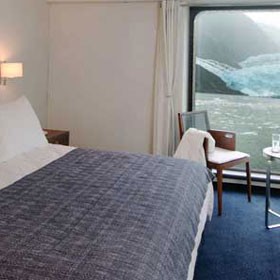Australis Cruises
Embark in a one-off exploration of the isolated fjords and surprising wildlife of Tierra del Fuego in southernmost Patagonia, navigating the waters of Cape Horn, the Beagle Channel and Strait of Magellan. Both the Stella and Ventus Australis feature spacious cabins overlooking the exterior with maximum interior comfort and spectacular views.
FJORDS OF TIERRA DEL FUEGO
Day 1
Puntas Arenas
Check in at 1385 O’Higgins Street (Arturo Prat Port) in Punta Arenas between 1pm and 5 pm on the day of your cruise departure in readiness to board the M/V Stella Australis at 6pm. After a welcome cocktail reception hosted by the captain and his crew, the ship departs for one of the most remote corners of the Earth. During the night we cross the Strait of Magellan and enter the labyrinth of channels that define the southern extreme of Patagonia. The twinkling lights of Punta Arenas gradually fade into the distance as we enter the Whiteside Canal between Darwin Island and Isla Grande de Tierra del Fuego. D
Day 2
Ainsworth Bay and Tuckers Islet
By dawn the ship is sailing up Admiralty Sound (Seno Almirantazgo), a spectacular offshoot of the Strait of Magellan that stretches nearly halfway across Tierra del Fuego. We go ashore at Ainsworth Bay, which harbors copious bird life and a colony of southern elephant seals which can sometimes be spotted from the Zodiacs. Two guided excursions are available: one is along the edge of a stream, peat bog and beaver habitat to a waterfall-and-moss-covered rock face tucked deep inside a pristine sub-polar forest; the other is a more strenuous hike along the crest of a glacial moraine. Both afford views of Marinelli Glacier and the Darwin Mountains.
Leaving Ainsworth Bay behind, we sail west along the sound to the Tucker Islets. After lunch, we board the Zodiacs again for a close-up view of Magellan penguins. More than 4,000 penguins use Tucker as a place to nest, give birth and nurture their chicks. Many other bird species also frequent the area including king cormorants, oystercatchers, Chilean skuas, kelp geese, dolphin gulls, eagles and even the occasional Andean condor. In September and April, when the penguins live elsewhere, this excursion is replaced by a short walk to a glacier at nearby stunning Brookes Bay. B L D
Day 3
Pia Glacier and Glacier Alley
Overnight we sail around the western end of Tierra del Fuego via the very narrow Gabrial Channel, Magdalena Channel and Cockburn Channel. After rounding the remote Brecknock Peninsula, Stella Australis tacks eastward and enters the Beagle Channel again. By morning we are entering Pia Fjord and boarding the Zodiacs for a shore excursion to Pia Glacier. Back onboard the ship we continue east along the Beagle Channel through an area called Glacier Alley. The passage features a number of impressive tidewater glaciers flowing down from the Darwin Mountains and Darwin Ice Sheet on the north shore. Most of them named are after European countries – Holland, Italy, Germany, Spain and France. B L D
Day 4
Wulaia Bay to Cape Horn
During the morning we cruise across Nassau Bay into the remote archipelago that includes Cape Horn National Park. Weather and sea conditions permitting, we shall go ashore on the windswept island which harbours legendary Cape Horn (Cabo de Hornos). Discovered in 1616 by a Dutch maritime expedition — and named after the town of Hoorn in West Friesland — Cape Horn is a sheer 425-metre rocky promontory overlooking the turbulent waters of the Drake Passage. For many years it was the only navigation route between the Pacific and Atlantic, and was often referred to as the “End of the Earth.” The park was declared a World Biosphere Reserve by UNESCO in 2005. The Chilean navy maintains a permanent lighthouse on the island, staffed by a lighthouse keeper and his family, as well as the tiny Stella Maris Chapel and modern Cape Horn Monument. In the afternoon, navigate the narrow Murray Channel between Navarino and Hoste islands and drop anchor at historic Wulaia Bay, one of the few places in the archipelago where human history is just as compelling as the natural environment. Originally the site of one of the region’s largest Yámana aboriginal settlements, the bay was described by Charles Darwin and sketched by Captain Fitzroy in the 1830s during their voyages on the HMS Beagle. After a visit to the museum in the old radio station — which is especially strong on the Yámana people and European missionaries in the area — you have a choice of three hikes (of increasing degrees of difficulty) that ascend the heavily wooden mountain behind the bay. On all of these you will be strolling through an enchanted Magellan forest of lengas, coigües, canelos, ferns, and other endemic fauna to reach a panoramic viewpoint overlooking the bay. Before leaving Wulaia Bay, drop something into the wooden mail barrel inside the museum – letters or postcards meant to be hand delivered by future travellers – an ancient mariner tradition revived by Australis. B L D
Day 5
Ushuaia
The following morning we sail into Argentine waters and dock in Ushuaia, the world’s southernmost city. Stella Australis is scheduled to arrive at 8:30 or 9:30 am depending on the date of departure. B
PATAGONIAN EXPLORER
Day 1
Ushuaia
Check in at 160 Juan Manuel de Rosas Street in downtown Ushuaia between 10am and 5pm on the day of your cruise departure in readiness to board the M/V Stella Australis at 5.30pm. After a welcome cocktail reception hosted by the captain and his crew we set sail and traverse the Beagle Channel overnight, crossing from Argentina into Chilean territorial waters. The lights of Ushuaia disappear as we turn into the narrow Murray Channel between Navarino and Hoste islands. D
Day 2
Cape Horn to Wulaia Bay
Around the break of dawn, Stella Australis crosses Nassau Bay and enters the remote archipelago that comprises Cape Horn National Park. Weather and sea conditions permitting, we go ashore on the windswept island that harbors legendary Cape Horn (Cabo de Hornos). Cape Horn is a sheer 425 metre high rocky promontory overlooking the turbulent waters of the Drake Passage. For many years it was the only navigation route between the Pacific and Atlantic, and was often referred to as the “End of the Earth.” Sailing back across Nassau Bay, we anchor at fabled Wulaia Bay, one of the few places in the archipelago where the human history is just as compelling as the natural environment. Originally the site of one of the region’s largest Yámana aboriginal settlements, the bay was described by Charles Darwin and sketched by Captain Fitzroy in the 1830s during their voyages on HMS Beagle. This area is also renowned for its mesmerizing beauty and dramatic geography. We visit the Australis-sponsored museum in the old radio station which features the Yámana people and European missionaries in the area and then have a choice of three hikes (of increasing degrees of difficulty) that ascend the heavily wooded mountain behind the bay. On each of these you stroll through an enchanted Magellanic forest of lengas, coigües, canelos and ferns to reach panoramic viewpoints overlooking the bay. Through the night, we continue our Patagonia glacier tour around the western end of Tierra del Fuego via the very narrow Gabrial Channel, Magdalena Channel and Cockburn Channel. After rounding the remote Brecknock Peninsula, the Australis cruise tacks eastward and enters the Beagle Channel again. B L D
Day 3
Pía Glacier – Garibaldi Glacier
By morning, we are entering Pia Fjord and boarding the Zodiacs for a shore excursion to Pia Glacier. After disembarking, take a short hike to gain a panoramic view of the spectacular glacier, which extends from the mountain tops down to the sea or a longer much more difficult walk up a lateral moraine of the old Pia Glacier. No one knows for certain how the hulking mass of snow and ice got its feminine moniker, but one theory says it was named for Princess Maria Pia of Savoy (1847-1911), daughter of the Italian king. Further west along the Beagle Channel, enter another long fjord and we drop anchor near Garibaldi Glacier for another shore excursion. Garibaldi is one of only three glaciers in Patagonia gaining mass rather than staying the same or slowly shrinking. This time, hike through virgin Magellanic forest to a glacial waterfall, a towering wall of ferns and moss, and spectacular viewpoints looking down on the glacier and fjord. The walk is demanding — very steep, negligible trail, rough footing — and not for everyone. For those who choose to stay onboard, your captain will point the bow towards the beautiful sky blue Garibaldi Glacier to enjoy the panoramic view from the upper decks. B L D
Day 4
Agostini Sound – Águila Glacier – Cóndor Glacier
Early in the morning, sail through the Cockburn Channel and enter Agostini Sound. From there it is possible to see the glaciers which descend from the middle of the Darwin Mountain Range – some of them reaching the water. This morning, disembark and go for an easy walk around a lagoon, which was formed by the melting of the Águila Glacier. You will reach a spot right in front of the glacier with stunning views. In the afternoon, we will approach the Condor Glacier via Zodiac – and hopefully see some of the abundant Andean Condors in the area. B
Day 5
Magdalena Island to Punta Arenas
After an overnight cruise through Magdalena Channel and back into the Strait of Magellan, anchor off Magdalena Island, which lies about halfway between Tierra del Fuego and the Chilean mainland. Crowned by a distinctive lighthouse, the island used to be an essential source of supplies for navigators and explorers and is inhabited by an immense colony of Magellanic penguins. At the break of dawn, weather permitting, we go ashore and hike a path that leads through thousands of penguins to a small museum lodged inside the vintage 1902 lighthouse. Many other bird species are also found on the island. In September and April, when the penguins dwell elsewhere, this excursion is replaced by a ride aboard Zodiacs to Marta Island to observe South American sea lions. After a short cruise south along the strait we disembark at Punta Arenas at around 11:30 AM. B
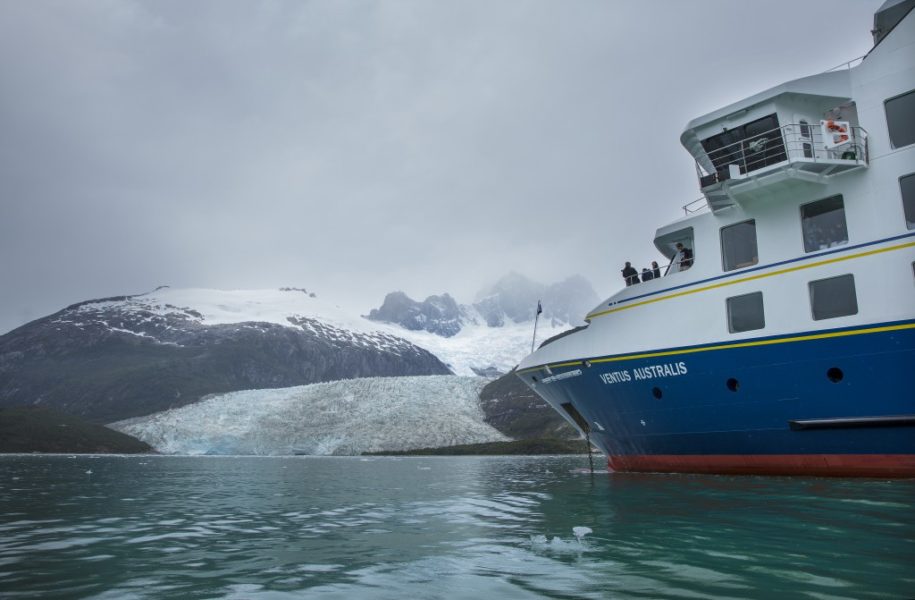
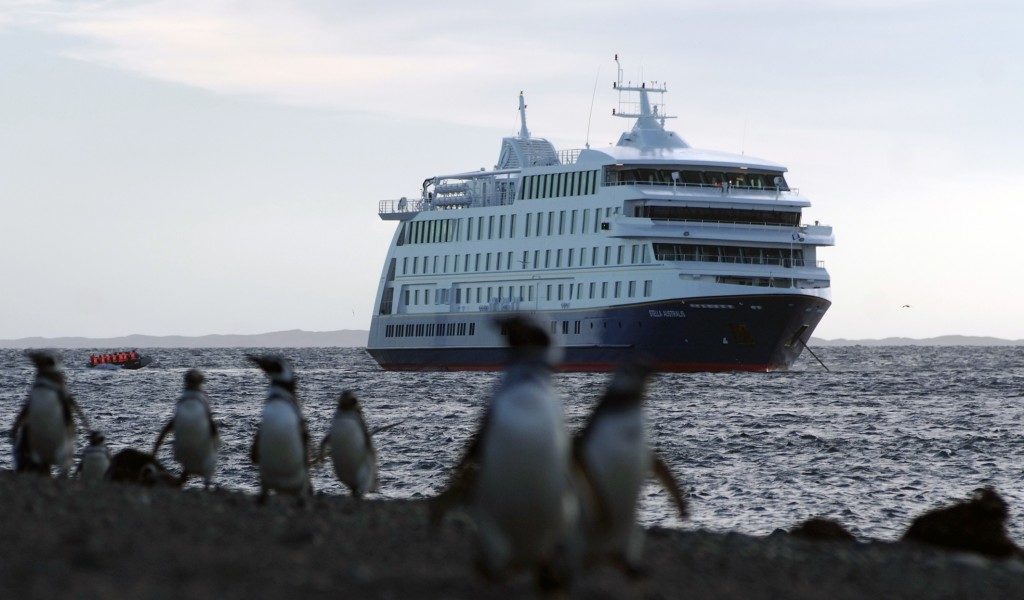
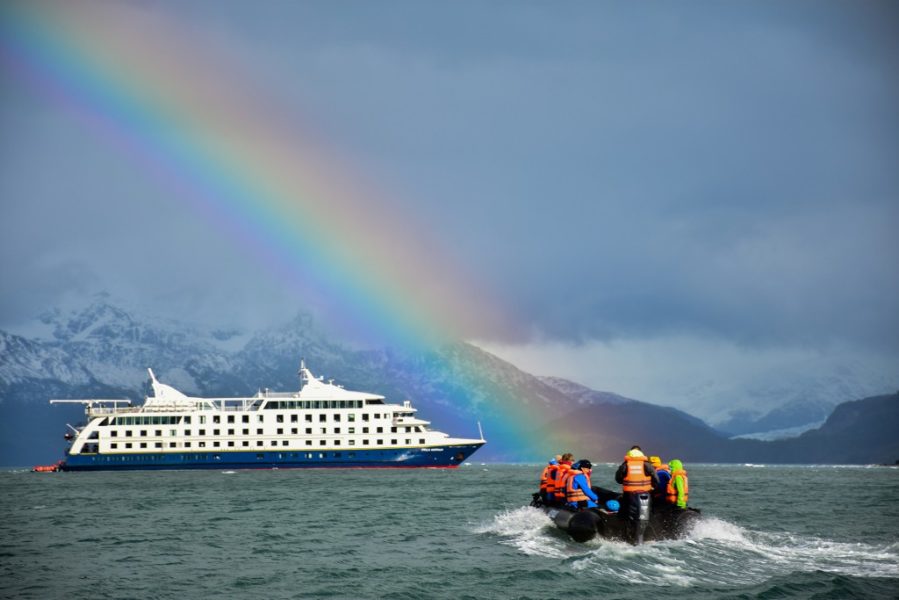
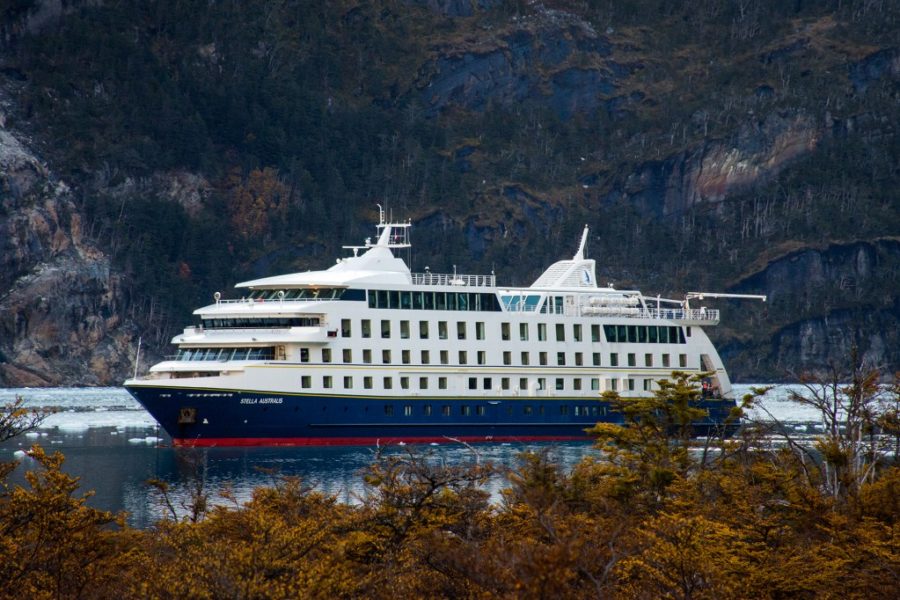
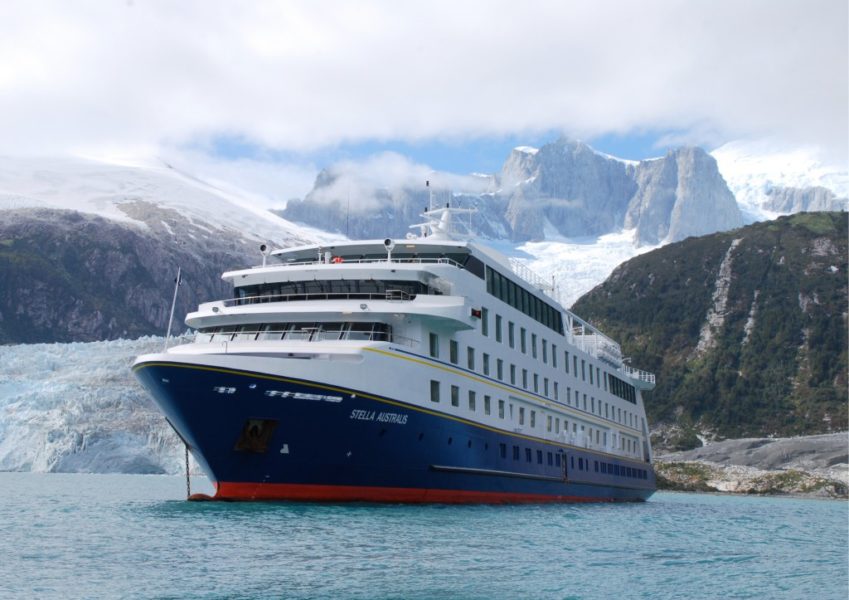
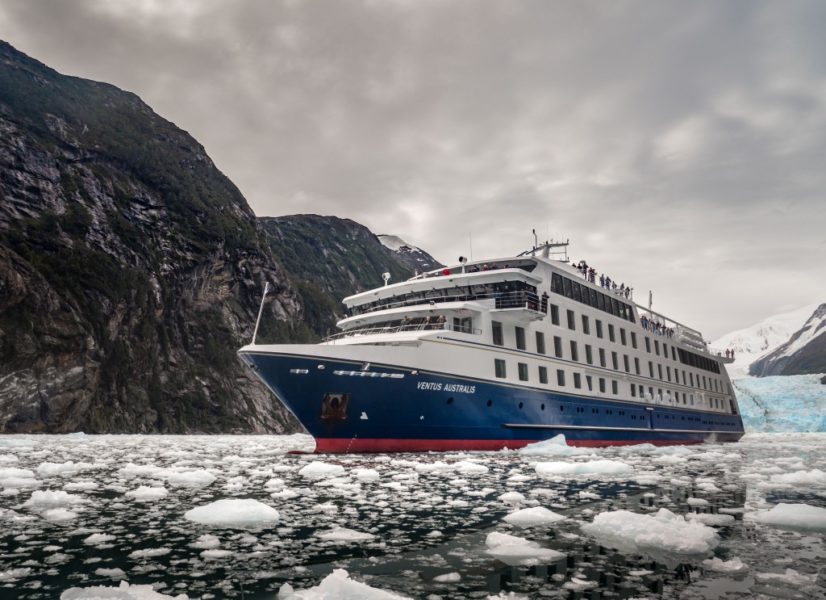
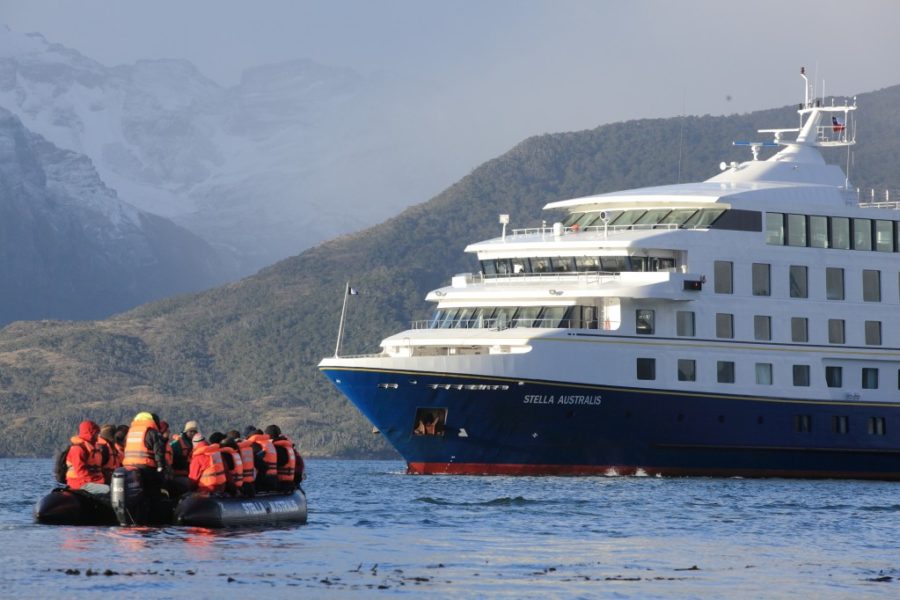
Tour Cost
Low Season – 4 NIGHTS
OCT 2019, 15 MAR – 04 APR 2020
*High Season: NOV 2019 – 14 MAR 2020.
Single rates will be applied in all types of cabins and the rate will be the 150% of the category rate – subject to availability.
Infants between 0 and 3 years old have a 100% discount, sharing the bed with their parents. Children between 4 and 12 years old have a 50% discount, sharing a cabin with an adult.
Ask about specials and for departure dates and 8 night cruises. Promotional rates available in September and April.
Rates include accommodation, sea transportation, all meals, open bar when on duty (without additional cost for wines, beverages, and liquors), shore excursions and onboard entertainment.
Optional tours and transportation are not included in the cruise rate: Rate does not include port tax, migration fee, and national park fee. (US$ 60 per person).
Port taxes, Airfares, premium liquors, items of a personal nature, insurance.
